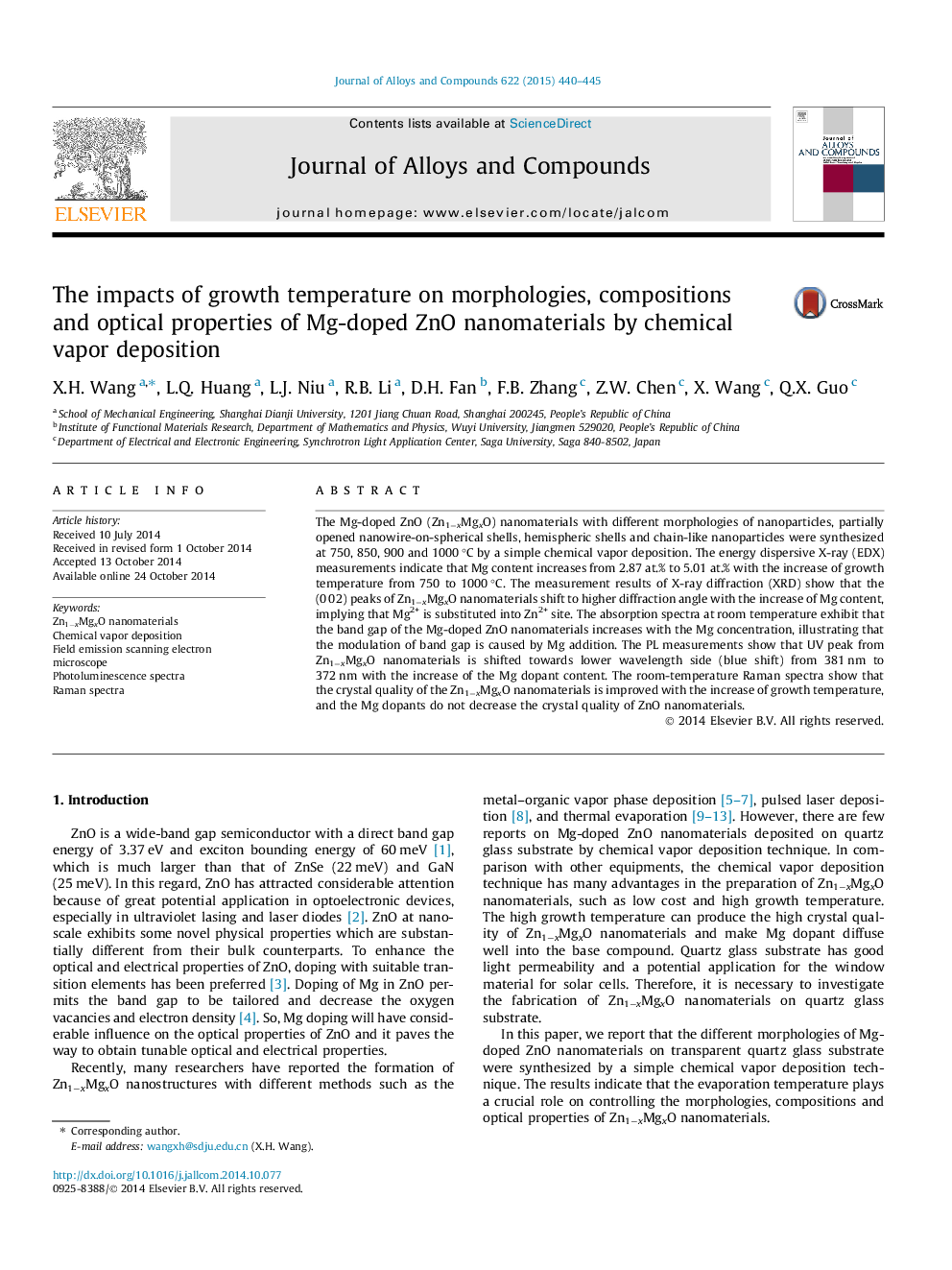| Article ID | Journal | Published Year | Pages | File Type |
|---|---|---|---|---|
| 1609916 | Journal of Alloys and Compounds | 2015 | 6 Pages |
•Mg-doped ZnO nanomaterials were fabricated by chemical vapor deposition (CVD).•Growth temperature determines the characteristics of Zn1−xMgxO nanomaterials.•The modulation of band gap is caused by Mg addition.
The Mg-doped ZnO (Zn1−xMgxO) nanomaterials with different morphologies of nanoparticles, partially opened nanowire-on-spherical shells, hemispheric shells and chain-like nanoparticles were synthesized at 750, 850, 900 and 1000 °C by a simple chemical vapor deposition. The energy dispersive X-ray (EDX) measurements indicate that Mg content increases from 2.87 at.% to 5.01 at.% with the increase of growth temperature from 750 to 1000 °C. The measurement results of X-ray diffraction (XRD) show that the (0 0 2) peaks of Zn1−xMgxO nanomaterials shift to higher diffraction angle with the increase of Mg content, implying that Mg2+ is substituted into Zn2+ site. The absorption spectra at room temperature exhibit that the band gap of the Mg-doped ZnO nanomaterials increases with the Mg concentration, illustrating that the modulation of band gap is caused by Mg addition. The PL measurements show that UV peak from Zn1−xMgxO nanomaterials is shifted towards lower wavelength side (blue shift) from 381 nm to 372 nm with the increase of the Mg dopant content. The room-temperature Raman spectra show that the crystal quality of the Zn1−xMgxO nanomaterials is improved with the increase of growth temperature, and the Mg dopants do not decrease the crystal quality of ZnO nanomaterials.
